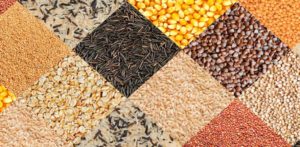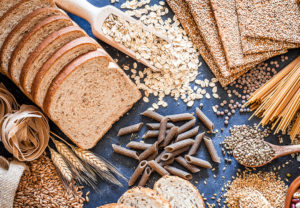Amazing Nutritional Value of Grains
When a discussion regarding nutritional value of grains are raised, many see grains and its products as foods that only make available; carbohydrates and calories.
However, it is worthy to note that whole grains particularly, are a great source of minerals, proteins and vitamins.
According to Encyclopedia of Foods written by Doctor George Pamplona-Roger, M.D; there are sufficient evidence or proves showing that whole grains and products derived from them have real and a great deal of healing and preventive power over diseases such as arteriolosclerosis, diabetes, cancer and dental caries.
Grains are energy-giving foods and provide abundant calories and even liberal use of the products cannot produce obesity, provided one does not consume calories than necessary.
Compared with energy content of other foods, grains, in particular whole grains and their products only lead to less fat accumulation.
What do Grains Provide?
What they provide entail the nutritional value of grains and the following are the essential nutrients. They are:
- Digestible carbohydrates
- Protein
- Vitamins B1, B2, B6, E, niacin and folates
- Phytochemical elements
- Minerals and trace elements
- Indigestible carbohydrates

Digestible carbohydrates: About 50% to 65% of weight of grain. They are mostly in form of starch and later converted to glucose by digestive enzymes.
The glucose is absorbed in the blood stream through the small intestine. They primarily provide energy to the entire body.
Protein: They make up 7.5% – 17.5% of weight of grain. In essence, the proteins in grains are quite sufficient in quality to meet the adult needs.
Taking into account of nutritional value of grains, it also favors children; however, needs to have it supplemented with other foods rich in lysine such as legumes and milk.
Vitamins B1, B2, B6, E, niacin and folates: These nutrients are readily found in bran and germ.
As it is, grains that have been refined when we talk about nutritional value of grains have very little of the nutrients mentioned above.
Phytochemical elements: Some phytochemicals similar to the isoflavons found in soy such as lignans, phytoestrogens and phytic acid and phytates and other phenolic compounds are some of the active antioxidants present in grains.
Minerals and trace elements: When we talk about nutritional value of grains, it is only whole grains products that contain trace elements such as iron, phosphorus, magnesium, calcium, zinc and selenium than other grain products that have been refined.
Indigestible carbohydrates or cellulose fiber are present in whole grains and their products.
Again, oats and wheat in terms of nutritional value of grains are the most protein-rich grains with regards to their caloric content. Consequently, rice and corn are the least in terms of protein content.
Insights to Nutritional value of grains
It is important to note that grains are a good source of bioactives and dietary fiber, in particular whole grains.
Whole grains are of the interest for the production of high value foods with a great deal of enhanced health benefits.
There are nutritional guidelines in many countries that recommend a greater proportion of whole grains be included in the diet so as to promote health.
The following are several varieties or whole grains. They are
- Whole rye
- Bulgur
- Oatmeal
- Millet
- Popcorn
- Quinoa
- Wheat berry
- Sorghum
- Barley
- Buckwheat
- Wild rice
- Brown rice etc.
In essence, any product made from any of these foods is seen as whole grain. For example; pasta, bread and breakfast cereals.
Whole grains are quite high in fiber and nutrients as stated earlier. They provide the following:
- Antioxidants
- Protein
- Minerals
- Vitamins
- Plant compounds such as stanols, sterols and polyphenols.
Grain as a Complete Unit
There are three components which all grains are made up of; they are:
- Bran
- Endosperm
- Germ
Dr. Bircher-Benner principles state that these three components make up a complete unit whose nutritional value surpasses the nutritional value of endosperm, bran or germ individually.

Why do whole grains matter a lot with regards to nutritional value of grains? This is because it makes available the ideal proportion of nutrients.
It is therefore, best to consume the whole grain just as it is made available by nature because it provides the ideal nutrients in their right proportions.
- Bran: Wheat is the widely used bran due to its laxative action, and also oats for their ability to lower cholesterol. They are quite rich in vitamins, fiber and minerals. Bran from rice, barley and corn are used also.
- Endosperm: These are formed by granules of proteins and starch
- Germ: The mostly used is the wheat germ. They are highly rich in B vitamins and vitamin E
Conclusively, in terms of nutritional value of grain, they do not content the following:
- Provitamin A
- Vitamin B12
- Vitamin C
However, grain sprouts contain provitamin A and vitamin C. As it is, these nutrients (vitamins) are lacking in dried grains.

A graduate of Computer Science and Information Management Technology. Diploma – Caregiving, Certificates – Dementia and Diabetes Awareness and Management. A researcher, blogger, songwriter, singer and acoustic guitarist. Born in an environment where natural talents such as healing are imparted at our natural birth. This natural talents of healing is the result of our genetic inheritance and the training from family environment.











